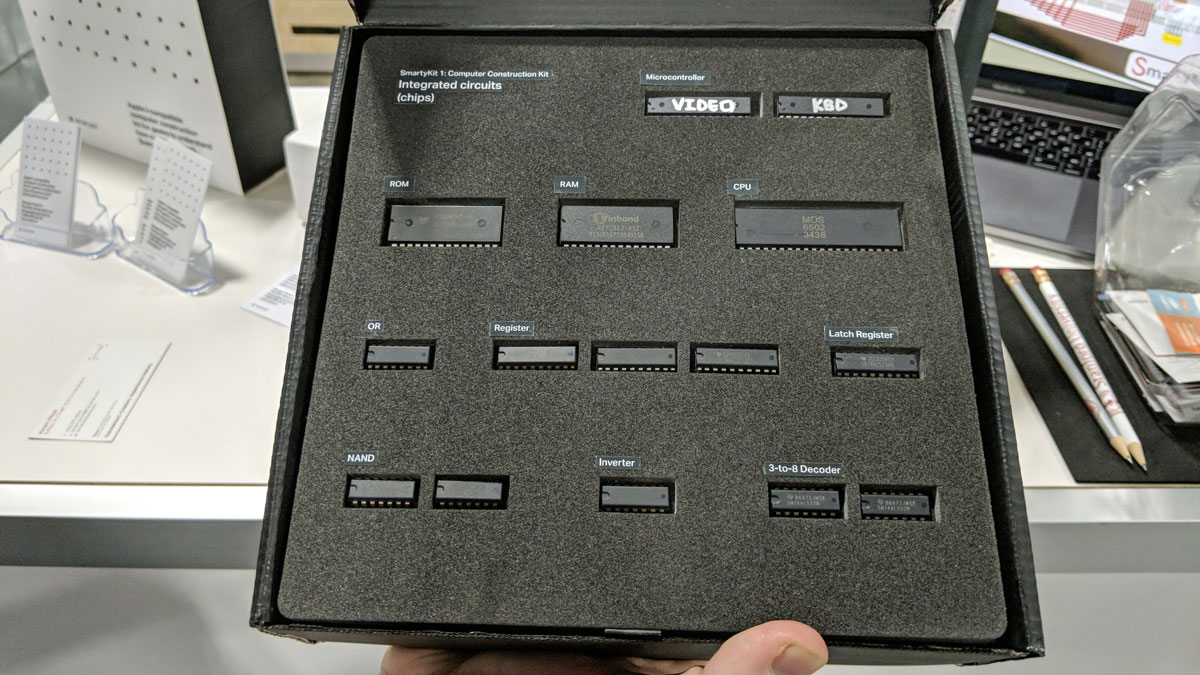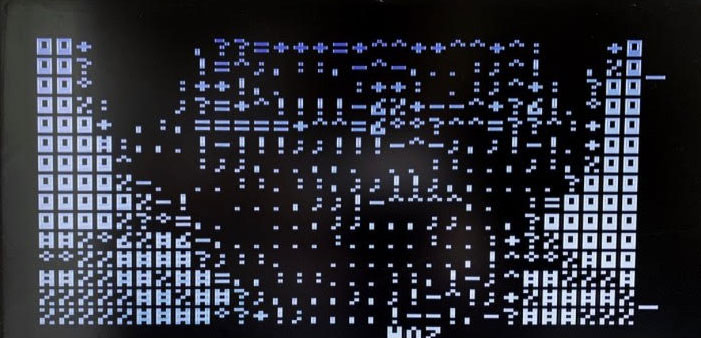DIY Kit Lets You Build Your Own Apple I, No Soldering Required
The SmartyKit comes with everything you need to make a working replica of the first Apple computer.
If building PCs that operate at 5 GHz seems passe, perhaps you'd rather put together a system that speeds a long at a blazing 1 MHz. Launching later this year for an introductory price of $119, SmartyKit provides all the parts you need to make a replica of the original Apple I computer.
The SmartyKit is designed to indulge Apple and computer history fans taste for nostalgia, while potentially teaching kids about how computers work. The kit comes with 15 different chips, including the same 1 MHz MOS 6502 processor used in the Apple I and a ROM chip that holds a copy of Steve Wozniak's original Monitor operating system.
The kit also comes with breadboards and jumper wires and a battery holder for powering it (it can run off standard batteries). There's no soldering involved as all the chips and wires are just attached to the breadboard. So it won't look quite like the Apple I.

You can get video out via a composite port too, so if you plan to use a modern monitor you may need a composite to HDMI adapter. For attaching a keyboard, there's also a PS/2 port, which is an anachronism since PS/2 debuted in 1987. However, these ports, though dated, give you the opportunity to connect to modern screens and keyboards, albeit using PS/2 to USB and Composite to HDMI adapters.
Once you get the kit, you'll have access to a number of online tutorials which show you how to build it and how it works. SmartyKit CEO Sergei Panarin said that it should take "about two weekends" to complete the build.
The operating system has two built-in applications, one which lets you program in BASIC and another that outputs an image of Apple Founder Steve Wozniak's face made out of ASCII characters. Unfortunately there's no way to connect a storage drive to the SmartyKit to add more applications. As Panarin told us, the main goal of the kit is building it, not running software on it afterwards.

The original Apple I was built by Steve Wozniak and Steve Jobs in 1975 and made its commercial debut in 1976 for the princely sum of $666, over $3,000 in 2020 money. Only 200 units were produced and, in the years since, they have become pricey collector's items. In 1977 Apple moved on to the much more useful and popular Apple II.
Get Tom's Hardware's best news and in-depth reviews, straight to your inbox.
There's no precise launch date for the SmartyKit, but Panarin said that it should be out later this year. If you visit the company's website you can sign up to be alerted as to when it goes on sale.
Avram Piltch is Managing Editor: Special Projects. When he's not playing with the latest gadgets at work or putting on VR helmets at trade shows, you'll find him rooting his phone, taking apart his PC, or coding plugins. With his technical knowledge and passion for testing, Avram developed many real-world benchmarks, including our laptop battery test.
-
Darkbreeze Having or finding an old system because it has historical or nostalgic value is one thing, and is understandable. BUILDING a system that old and slow, and spending that kind of money to DO it, seems like a lame waste of money to me. It won't be WORTH anything, to anybody but the person who bought it and after the five seconds of novelty wears off, it won't even be worth anything to them when they realize it's worthless except as a conversation piece.Reply
I'd rather throw the 120 bucks down on the table and talk about IT. -
cryoburner I think it's meant to be thought of more as an educational tool. Something like this might be good for teaching kids about each of the parts that goes together to form a simple computer, and what each of those components does, for example. A class could then maybe learn a bit of BASIC programming and enter some simple programs in, with an explanation of what each chip is doing in response to each command. Something like a Raspberry Pi might be fine for teaching programming on, and probably a lot more useful as an end-product, but it's a system on a chip with a lot of complex systems obfuscating its operation from the end-user.Reply
On a side note, if you search for SmartyKit on Amazon, you get a bunch of "SmartyKat" cat toys instead. : P -
Exploding PSU I'm more impressed with the fact that they can still source 6502 chips. I thought they all already melted for the gold long ago.Reply -
Spinachy 6502 cpus and support chips are still in production. There are also many, many (open source) FPGA implementations.Reply
Smartykit seems to be a similar project to this Ben Eater 6502 tutorial and kit. I had a lot of fun, and learned a lot about microprocessors, by building the Ben Eater kit.
The Ben Eater kit has the advantage of not using arduino chips for its (admittedly more primitive) I/O. -
gargoylenest why? because apple fanboys will buy anything, as long as its overpriced and says its apple.Reply -
rbanffy ReplySpinachy said:6502 cpus and support chips are still in production. There are also many, many (open source) FPGA implementations.
Smartykit seems to be a similar project to this Ben Eater 6502 tutorial and kit. I had a lot of fun, and learned a lot about microprocessors, by building the Ben Eater kit.
The Ben Eater kit has the advantage of not using arduino chips for its (admittedly more primitive) I/O.
I'd love to be able to run my Apple II's at 14 MHz... -
cleavet Briel Computers has offered an Apple I replica kit for a decade and a half: http://www.brielcomputers.com/wordpress/Reply -
khurtwilliams It's a novelty. Like a 1000 piece jigsaw puzzle, this will occupy your mind for some time but once it's complete, it's completely useless.Reply -
khurtwilliams Replycryoburner said:I think it's meant to be thought of more as an educational tool. Something like this might be good for teaching kids about each of the parts that goes together to form a simple computer, and what each of those components does, for example. A class could then maybe learn a bit of BASIC programming and enter some simple programs in, with an explanation of what each chip is doing in response to each command. Something like a Raspberry Pi might be fine for teaching programming on, and probably a lot more useful as an end-product, but it's a system on a chip with a lot of complex systems obfuscating its operation from the end-user.
On a side note, if you search for SmartyKit on Amazon, you get a bunch of "SmartyKat" cat toys instead. : P
A Raspberry Pi or Arduino can teach the same and at the end is far more practical and useful. In the case of the RPi, you can even run a modern operating system and software. -
cryoburner What I'm saying is that a simple system with more well-defined individual components might be better for teaching what the basic parts of a computer do at a lower level. And it might provide a better idea of what early home computers were like, especially for those who may have only grown up with smartphones and multi-GHz, multi-core computers. That's not to say that newer hardware can't be used for education, but there's probably room for something like this as well.Reply
